Phillips and Sullivan (2023)
The economics of Housing & Homelessness
With Reference to
Evans et al. (2016)
Overview
"The primary concern is that most individuals and families at risk of losing their housing do not end up homeless, even if they do not receive financial assistance"
Motivation
"A study in Chicago, for example, found that among eligible people who sought financial assistance to prevent homelessness but were denied, only 2 percent entered an emergency shelter within 6 months (Evans et al., 2016).
"To-date there is no direct experimental evidence of the impact of such financial assistance"
Geography: Santa Clara, CA
Design
Clients who are on the margin of being eligible for assistance and who cannot demonstrate an ability pay future rent in a county with high and rapidly rising rents.
Results
Emergency Shelter Usage
Evans et al. (2016)
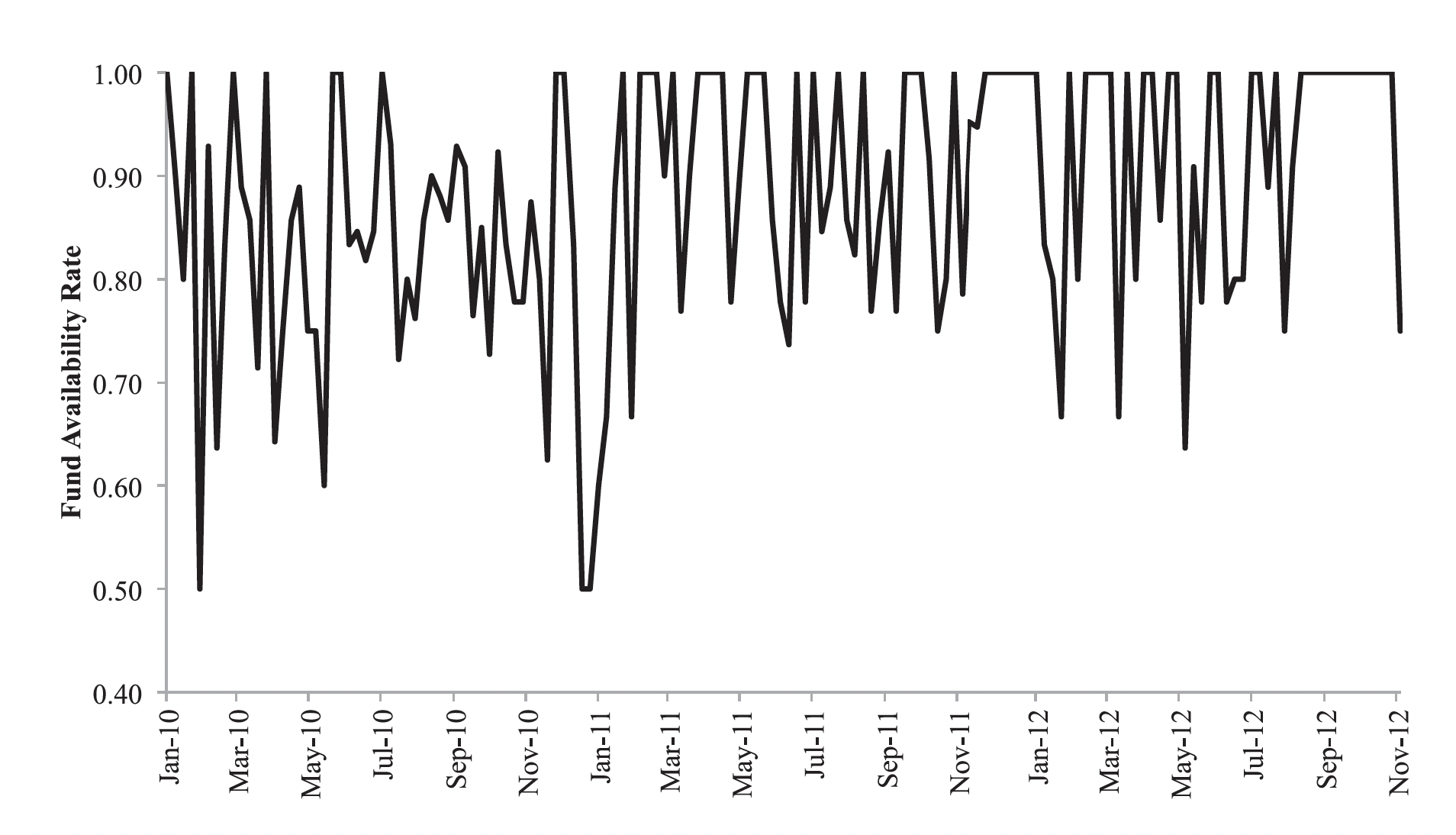
Funding Rate
Non-veteran tenants seeking one-months rent ($300-$900) who don't have a rental subsidy and whose income is less than twice the poverty line and have a social security number
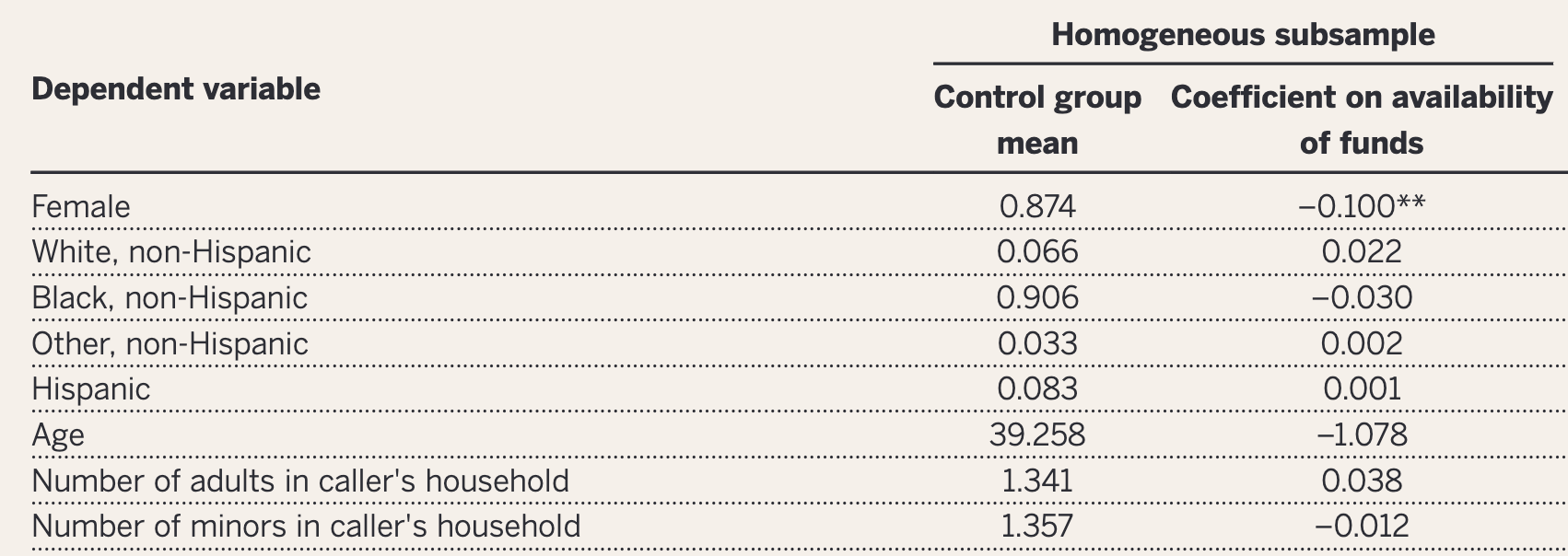
Baseline Differences
Treatment Effects
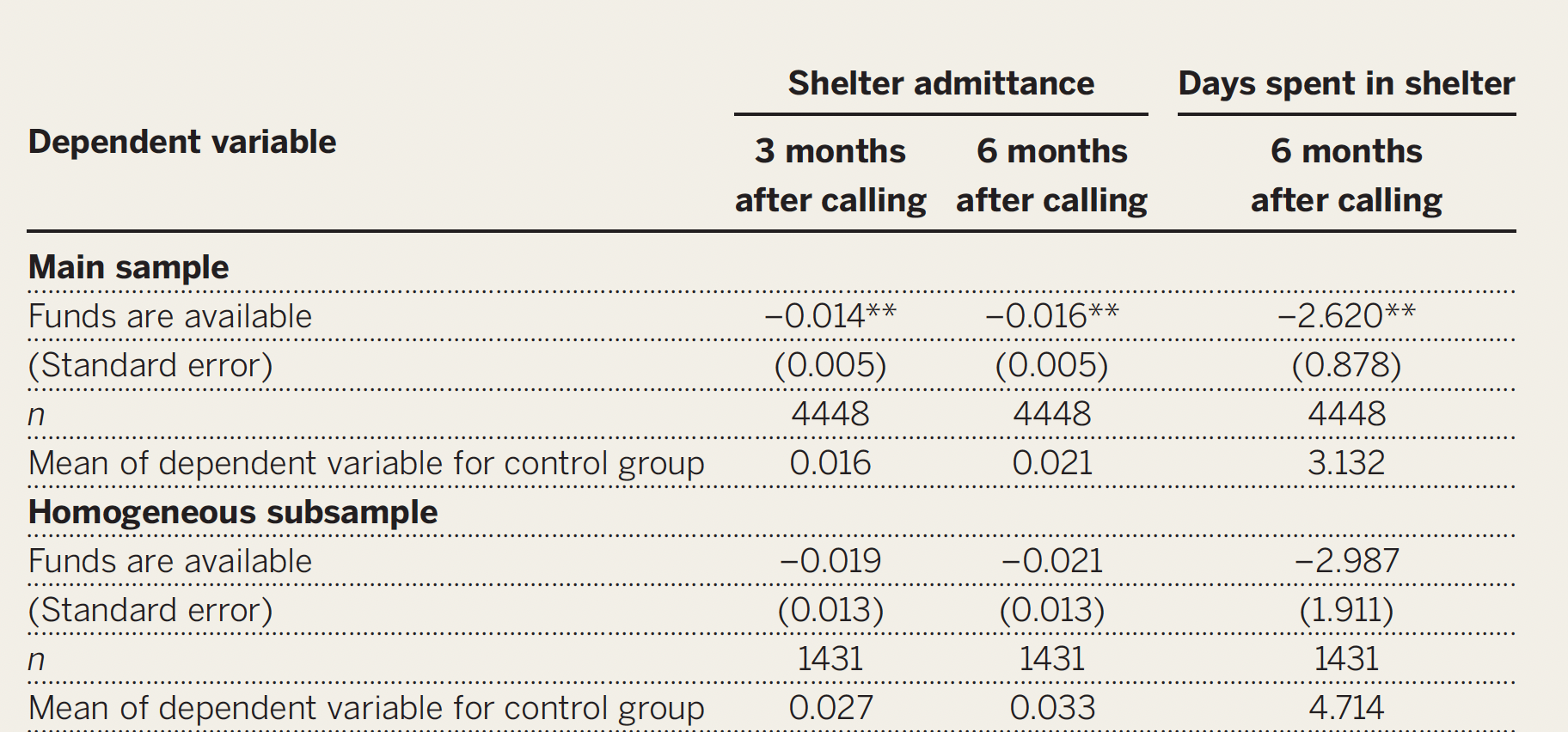
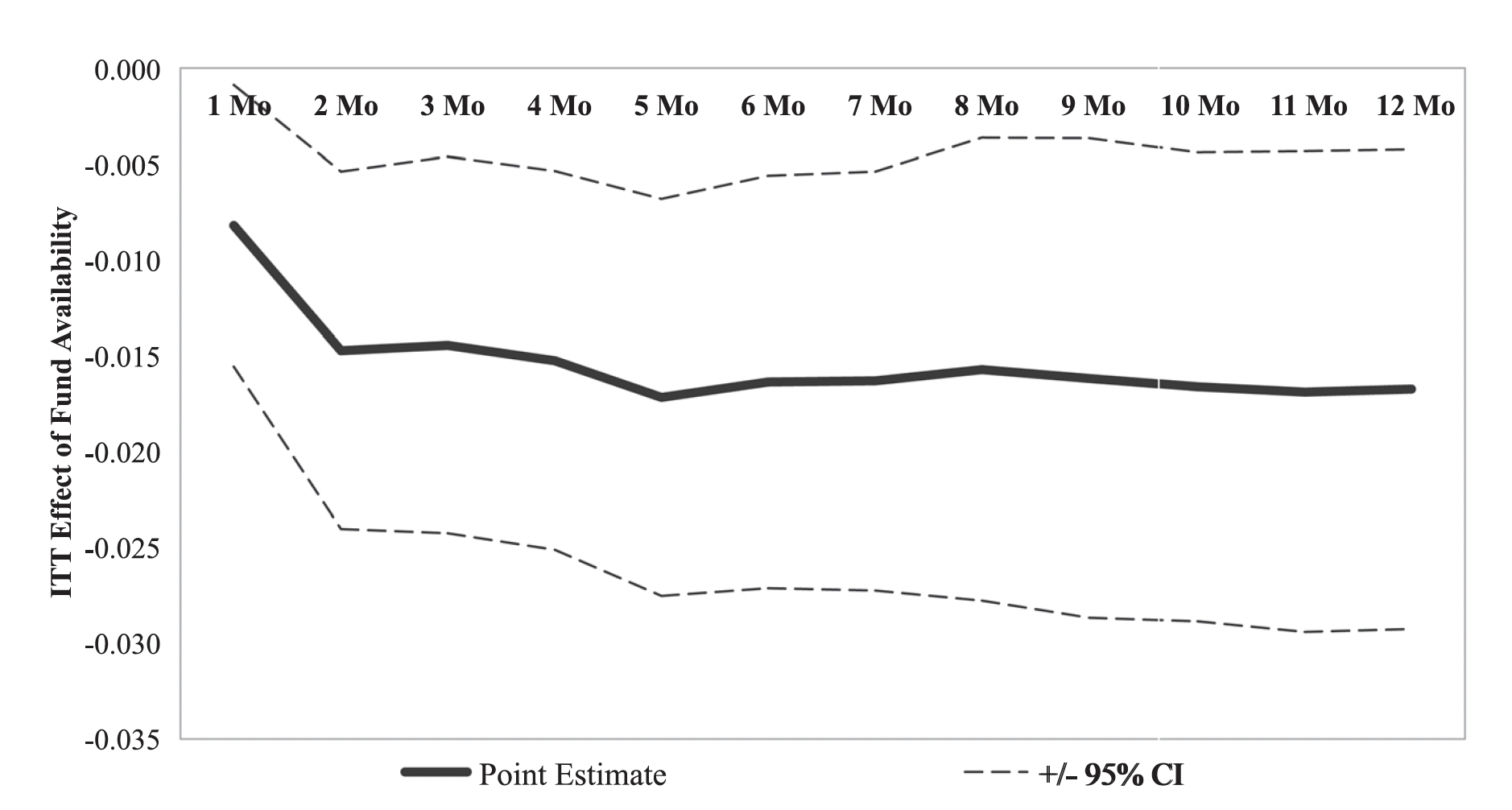
Dynamic Treatment Effects
Background
- It might not provide adequate support to many people
- It might provide financial assistance for people who are unlikely to become homeless without the support
Why might homeless prevention programs which provide financial assistance not be effective?
Average Financial Assistance
Financial Assistance
- Rent, Security Deposits, Utility Bills
- Tenants who are housed, behind on rent, and at imminent risk of being removed
- Target tenants who cannot demonstrate an ability to pay after the financial assistance ends
Sample Eligibility
Not Eligible
for Support
Eligible
for Support
Assessment Score
Entitled to Financial Assistance
- Exclude tenants who are expected to receive support if assigned to the control group (Potential Ethical Concerns?)
Analysis
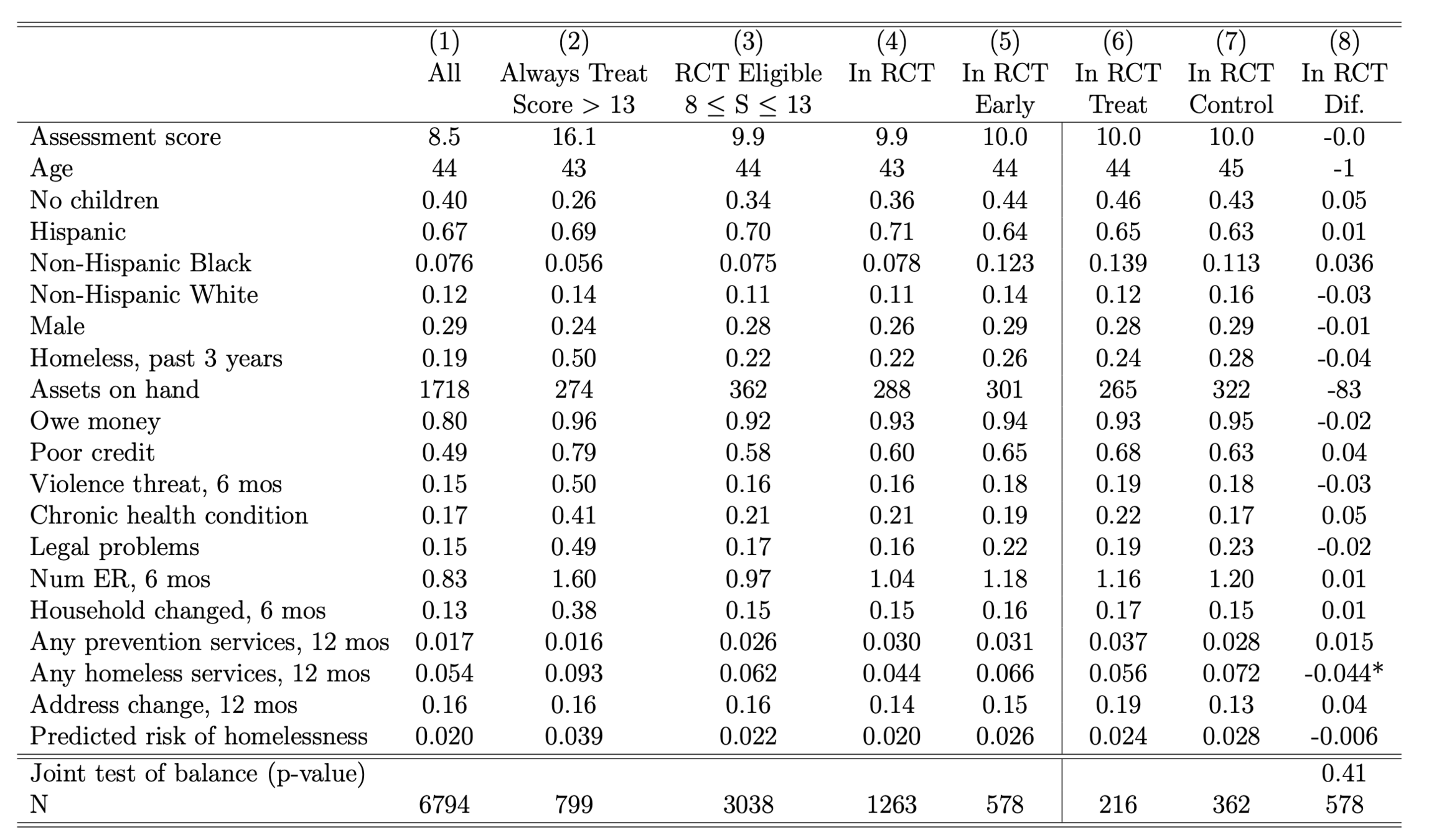
Which is the most interesting column-column comparison?
Temporary Offer of Financial Assistance
Agency & Month Fixed Effects
Formally Homeless
Regression Specification
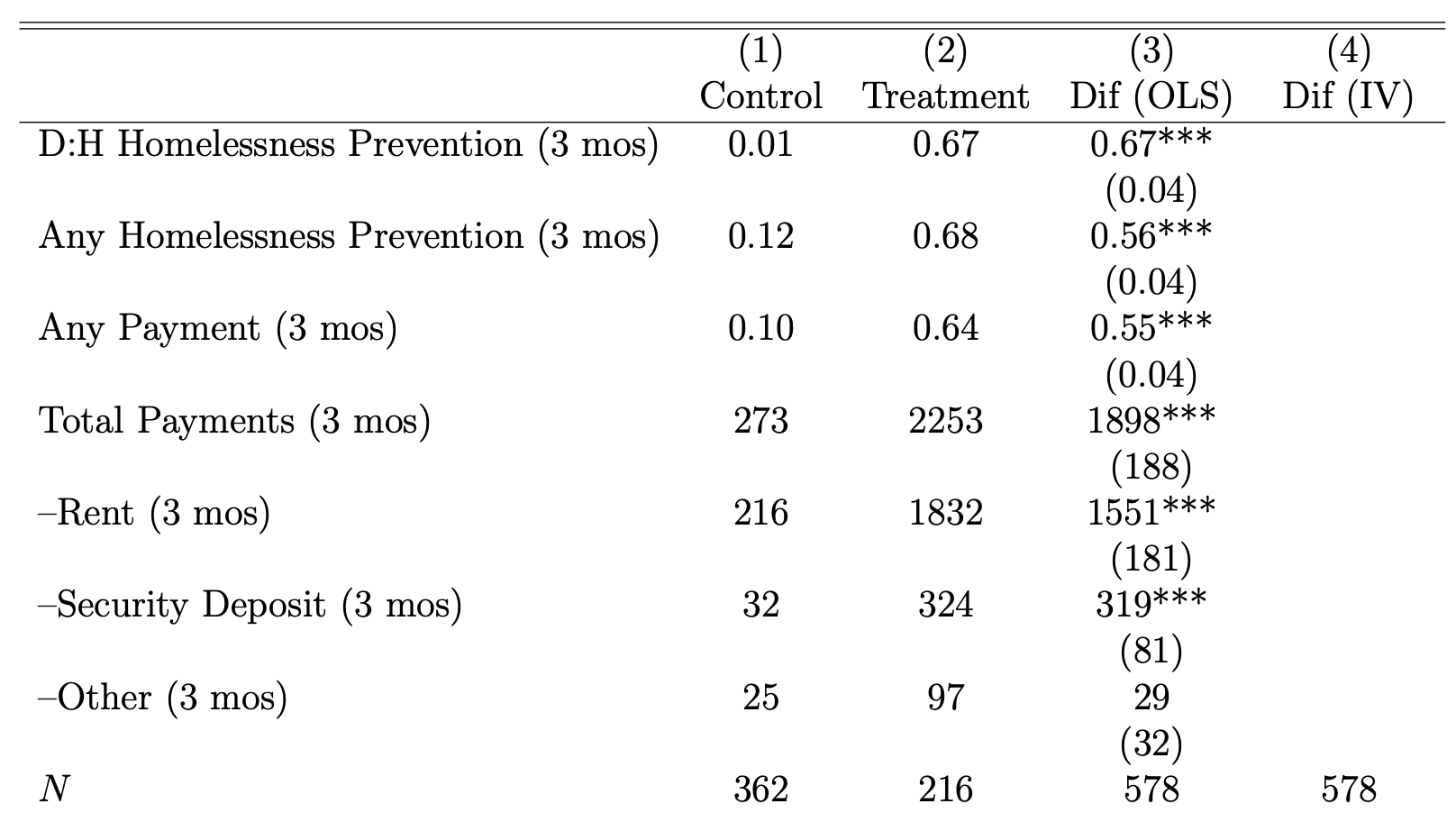
First Stage
LATE
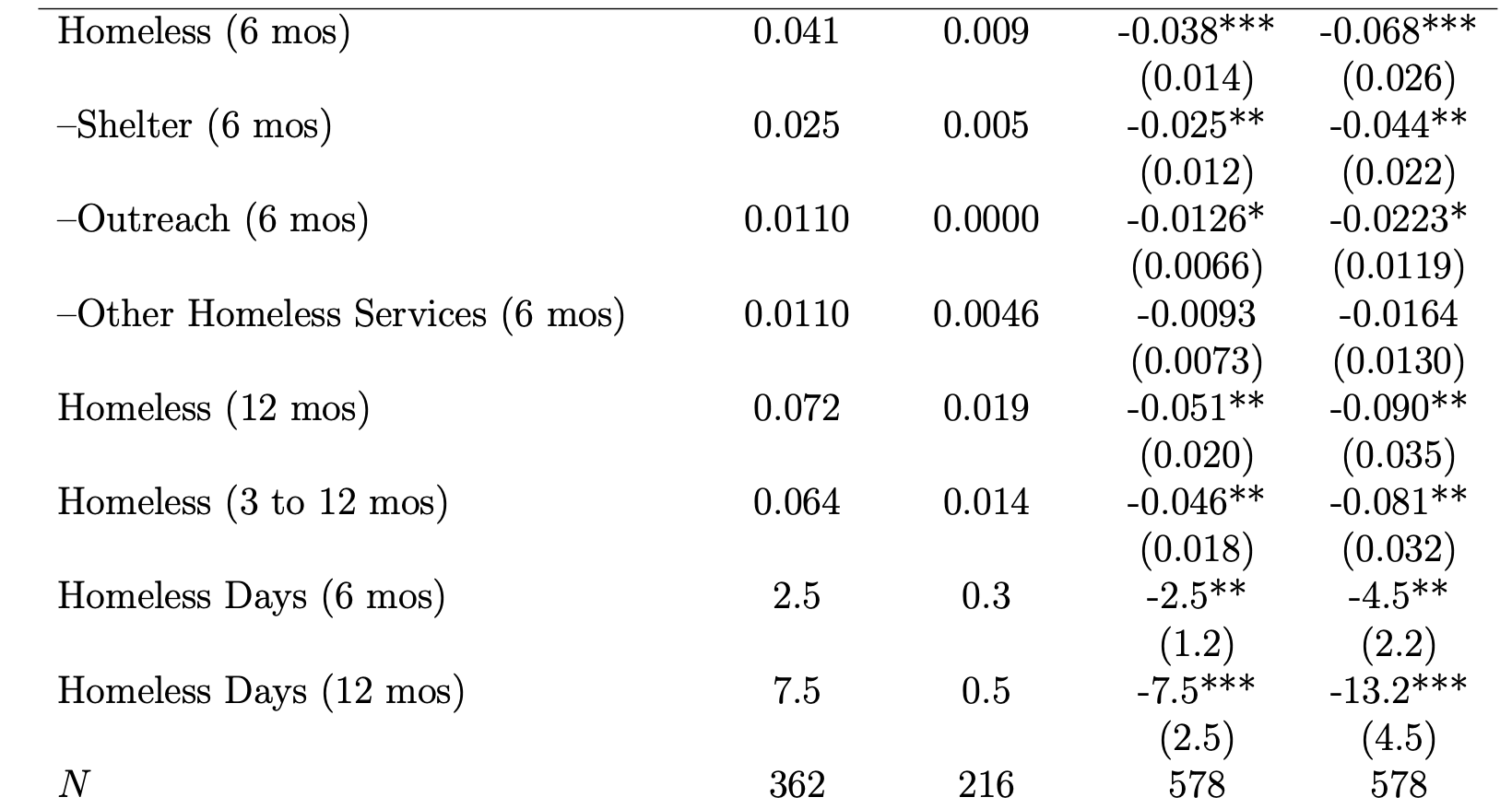
Treatment Heterogeneity
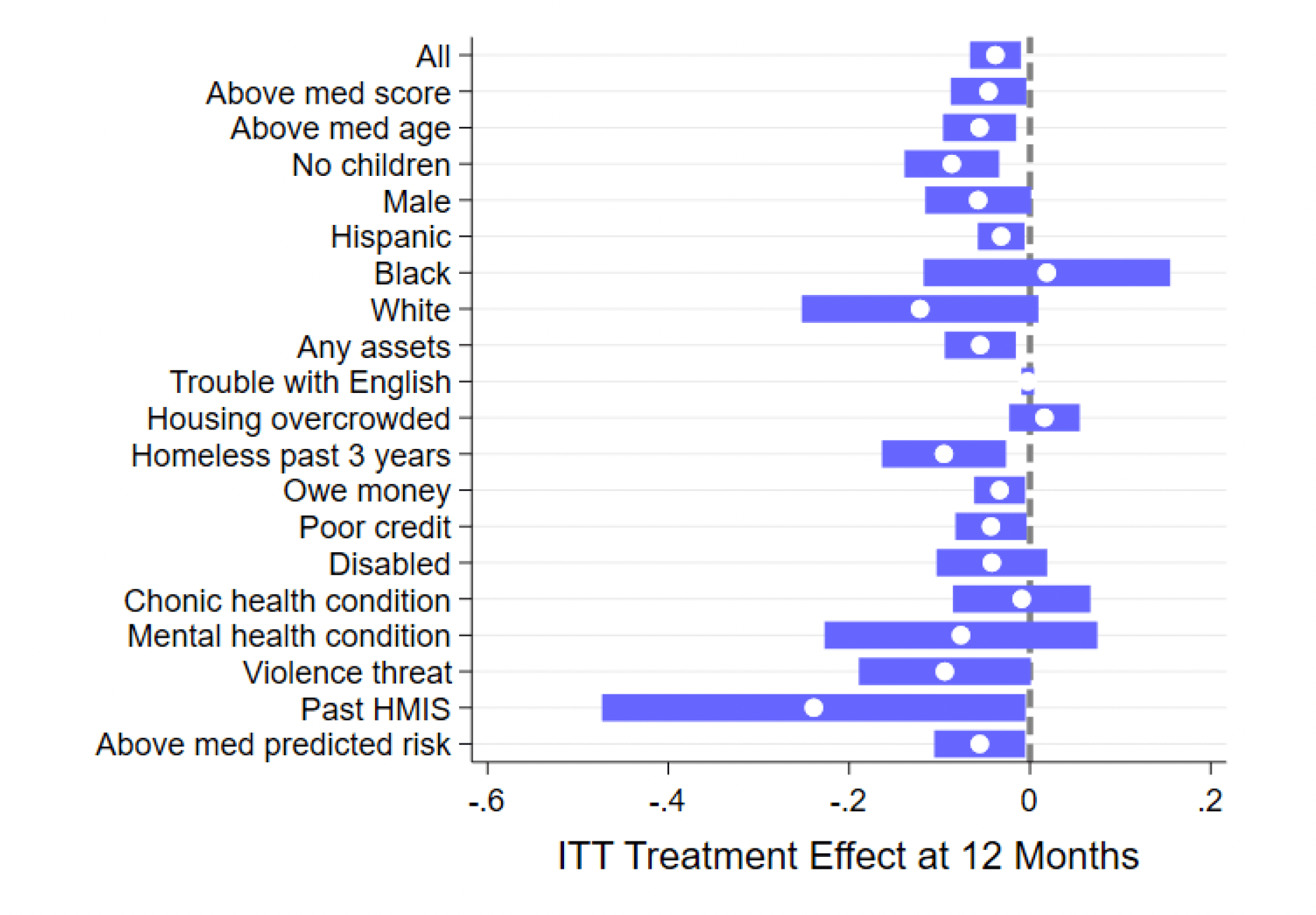
Big Picture Takeaways
- Evans et al. (2016) indicates that temporary financial assistance for those with documented income decreases the takeup of homelessness services
- The interesting aspect of this paper is that it studies tenants without documented future income
"The client must be able to demonstrate self-sufficiency after they receive assistance; (ii) the client must have an eligible crisis (e.g., job loss or medical emergency) that has led to the need for assistance; (iii) the client must face imminent risk of homelessness or utility shutoff; and (iv) the current crisis must be solvable by the financial assistance."